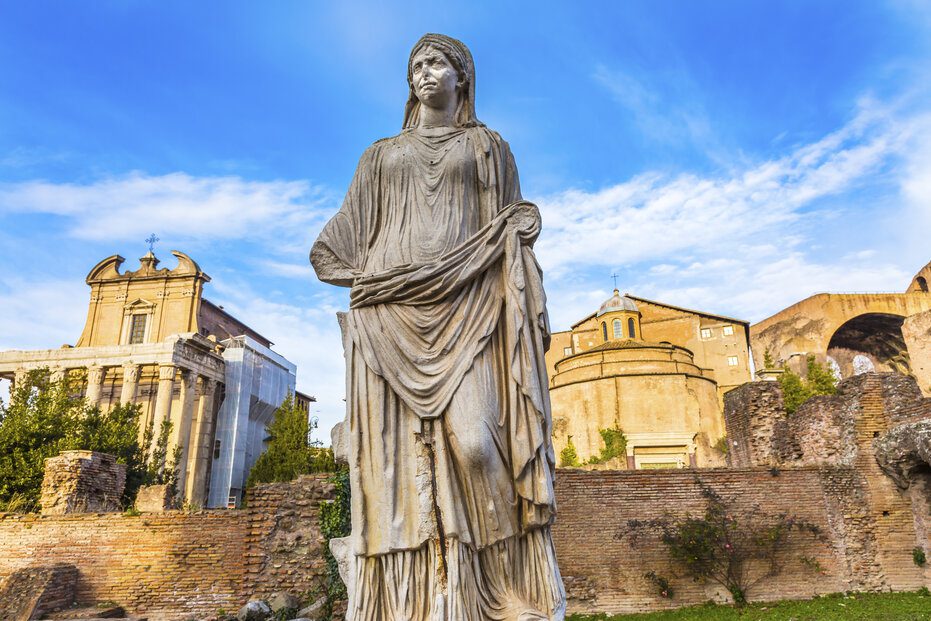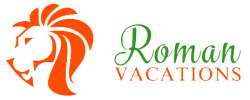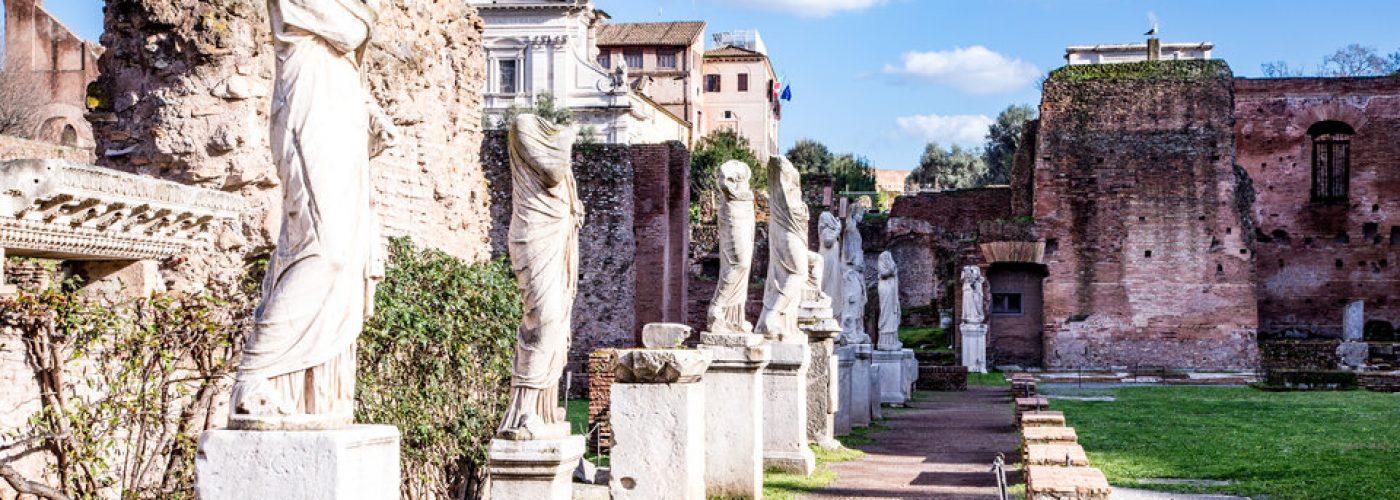Get to know Ancient Rome’s favourite ladies: The Vestal Virgins and the Eternal Fire of the Temple of Vesta.
Women have suffered a turbulent ride of ups and downs in terms of how much power they held in society throughout history. Therefore, it’s no surprise that women in Ancient Rome did not enjoy the same liberties that we as women of the 21st Century hold.
However, there was a small group of women in Ancient Rome that were held in the highest regard in society. No, not the wives and daughters of Emperors, the Vestal Virgins.

Vesta and The Virgins
Vesta was a Goddess adopted by the Romans from the Greek tradition where she was known as Hestia. Daughter of Saturn and Ops, Vesta was the virgin Goddess of hearth, home, and family. She was rarely depicted in human form but instead represented by fire. Having an accessible source of fire in the early days of Ancient Rome was essential to the survival of the people. It was also seen as a good omen for the survival of the city.
As a result, the Temple of Vesta was one of the first three buildings erected in the Roman Forums in the 7th century BCE. The other two were: 1) the House of the Vestal Virgins and 2) the House of the Kings. It was built even before the Temple of Saturn – who was the God of all Gods. Vesta and her fire were super important parts of the life of the early Romans.
The Vestal Virgins were the priestesses that tended to the fire in the temple and performed religious rites. Thus making them some of the most respected people in society and were highly revered by all.

Becoming a Vestal Virgin
To become a Vestal Virgin, young girls (mostly) from patrician families between the ages of 6 and 10 would compete in a pageant of a sort, from which the holiest man in the land – The Supreme Religious Authority of the State or Pontifex Maximus – would select the girls who could join the order.
There were never more than 18 Vestals in the order at each given time. Six would-be novice Vestals. They would spend 10 years learning and training in how to tend to the fire in the Temple of Vesta, practice religious rites and ceremonies, and fulfil other religious duties. Six Vestals would make up the “active duty” part of the order. For 10 years they would be responsible for tending the fire 24/7, performing religious rites, and other duties. Finally, six Vestals in their third decade of service would be charged with teaching and training the new novice Vestals in their duties.
After 30 years of dedicated service, the women were free to reintegrate into society after earning a handsome dowry. They were allowed to marry, buy property, and even vote. There are records of several women choosing to remain a Vestal Virgin beyond their 30 years as part of the order.

Work Perks and a Fate Worse Than Death
The Vestal Virgins were highly venerated for their position in religion and society. They held an enormous amount of power and were on occasion consulted on matters of politics. If a condemned man crossed paths with a Vestal, it was considered a sign of redemption from the Gods and so he was immediately pardoned.
However, if one of the Vestal Virgins were to, let’s say, have a bad day at work and let the fire die or momentarily forget her vows and engage in relations with a man, the punishment was severe. The penalty for letting the fire in the Temple of Vesta die was to be publicly whipped in the Roman Forum. The penalty for breaking vows on the other hand was creatively cruel. A Vestal accused of breaking her vow of chastity was to be buried alive with a loaf of bread and a lamp in a small chamber in The Field of the Wicked outside the walls on the Quirinal Hill.
It was an offence to the Gods to kill a Vestal Virgin with one’s own hand, meaning that if she were buried alive with a loaf of bread, YOU didn’t kill her but rather her circumstance allowed her to die on her own. See? Creative.
The good news is that records show only 10 Vestals were ever punished for impropriety in the 1000+ years of the order’s existence.

Famous Vestal Virgins
Did you know: Rhea Silvia, also known as the mother of Romulus (founder of Rome) and his twin brother Remus, was a Vestal Virgin when she fell pregnant with them. As the legend goes while Rhea tended to the fire in the Temple of Vesta, the God Mars appeared in the flames and lay with her at which point she fell pregnant with the twins. Immaculate conception…how original.
Did you know (part 2): The Vestal Virgins also became some of the very first Christian nuns! The first documented case is of a woman named Claudia who was a Vestal Virgin in the 4th century. This was around the time that Emperor Constantine legalized Christianity. She openly converted to Christianity and kept her vow of chastity. Meaning that the Vestals in a sense were sort of prototype nuns.

Visit Vesta and The Vestal Virgins
The Temple of Vesta and the House of the Vestal Virgins are located in the Roman Forum in Rome, Italy. You can still visit these incredible ancient ruins up close and personally.
These women were influential, powerful, and highly respected in Ancient Rome. The order of the Vestal Virgins endured for over 1000 years, from the 7th century BCE to the end of the 4th century CE, and their story continues to live on.


Recent Comments